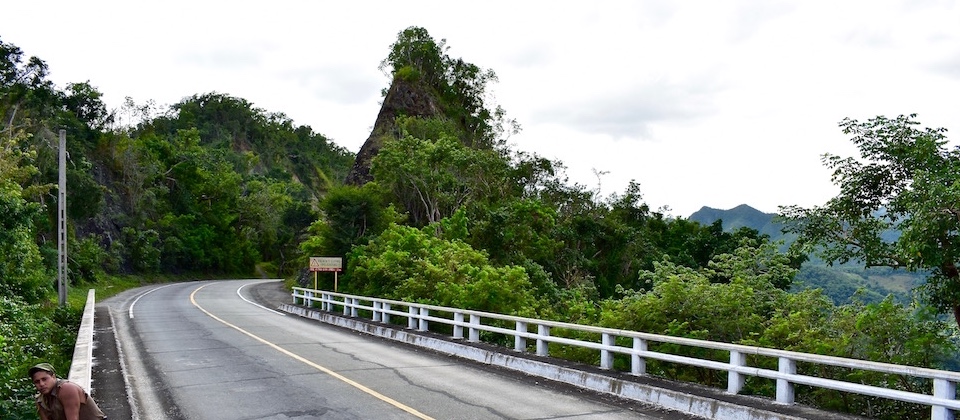
Published on 10 December, 2017.
The route to Baracoa from Santiago de Cuba encompasses some of the most beautiful roads in Cuba. The southern coast of Guantanamo province features karst formations right by the deep blue of the Caribbean, while the legendary La Farola road crowns the trip meandering between the green Sierra del Purial mountains.
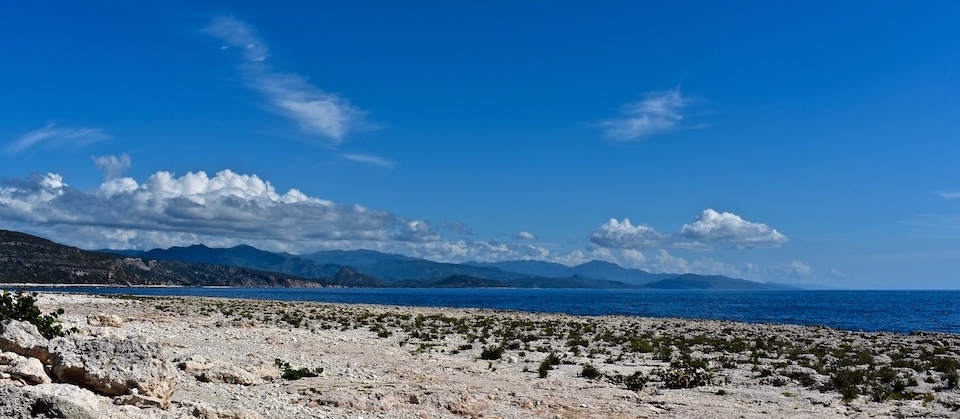
Throughout the 250 km you’ll cover from Santiago to Baracoa you’ll find a number of outstanding lookout points – not only your destination, but the road itself that gets you there offers you a beautiful geographical experience.
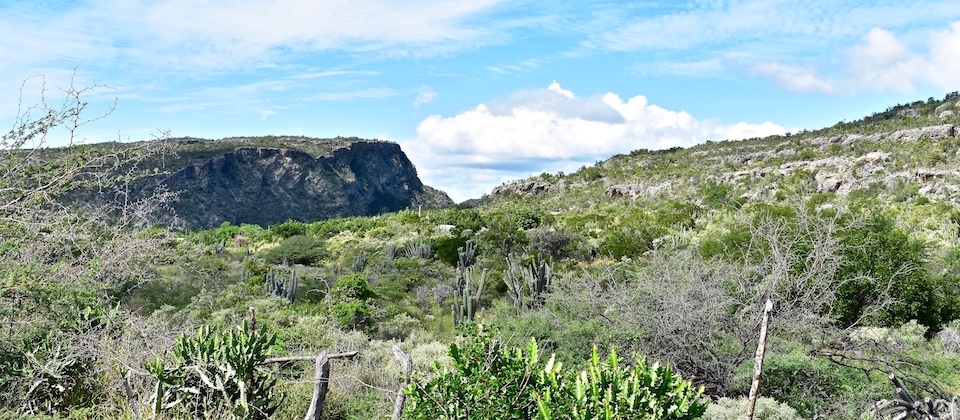
Leaving Santiago de Cuba behind, entering Guantanamo
Roughly 95 km separate Santiago from the guantanamera capital. Our beautiful Guantanamo province is famous for the unique song “Guantanamera”, through which Joseíto Fernández musicalized pristine simple verses by the great José Martí.
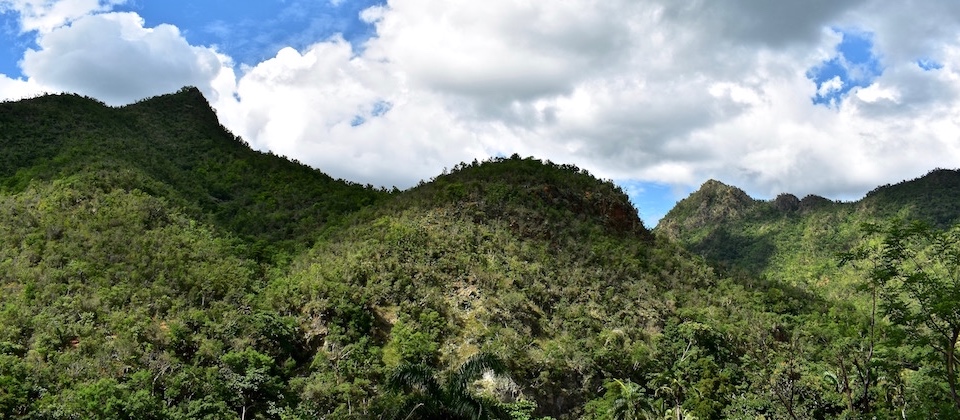
But Guantanamo is also frequently associated with the abominable military base that the United States installed on our territory early in the 20th century, via treaties signed under the pressure of military force.
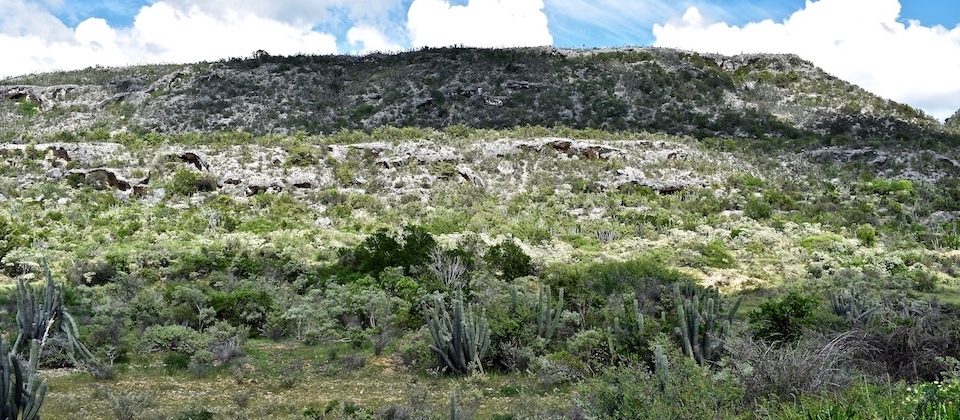
Once you pass the city of Guantánamo, the road gets ever closer to the southern coast and the Caribbean. The arid climate vegetation sprawls on both sides of the road – cacti, bushes, a variety of endemic palms…
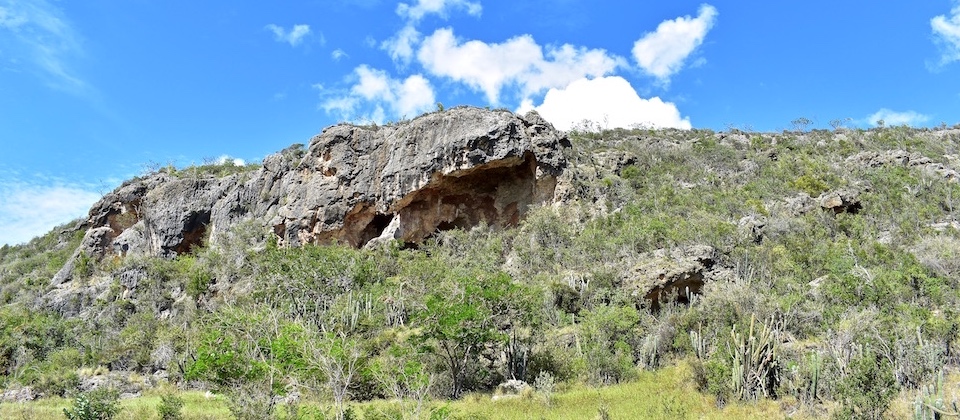
The next 100 km after the provincial capital are marked by limestone forms, some of them quite striking and sprinkled with holes and caves. To your right-hand side, as you gaze towards the south, you’ll be captivated by the deep, immaculate blue of the Caribbean.
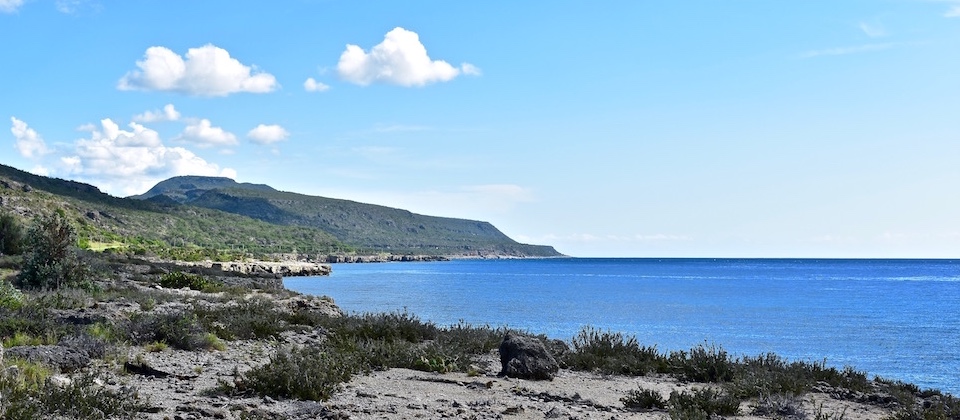
Crossing the Sierra del Purial – La Farola
Surrounded by the tough mountains of the Nipe-Sagua-Baracoa massif, for centuries Baracoa remained isolated from the rest of Cuba. It could only be reached by sea. Thus, a local identity developed, at once unique and authentically Cuban.
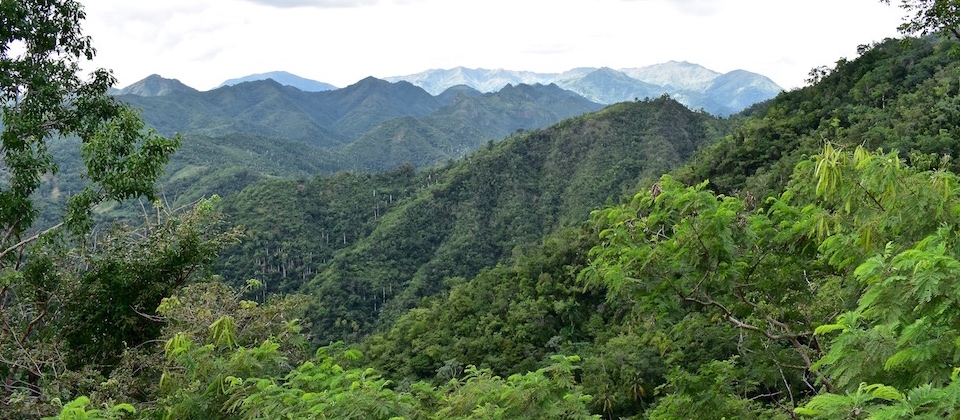
In 1964, a few years after the triumph of the Cuban revolution, La Farola road was completed. Considered one of the seven wonders of modern Cuban civil engineering, La Farola covers some 60 km between the province’s southern coast and Baracoa.
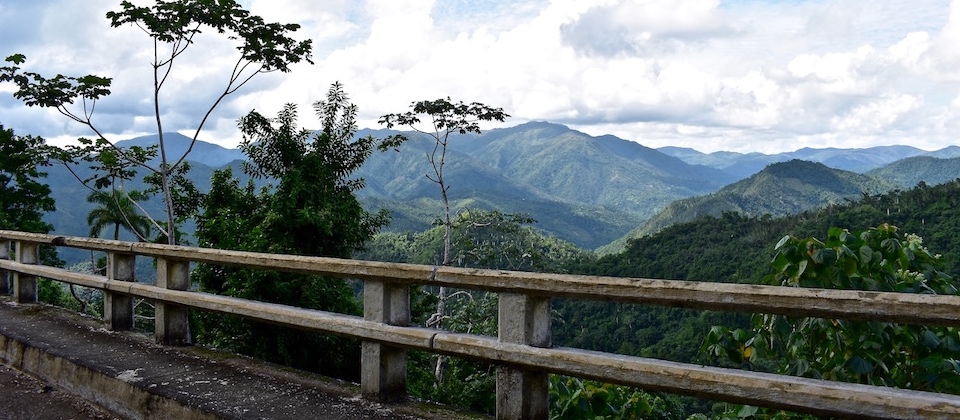
Some of La Farola’s stretches seem to float above high cliffs, suspended by horizontal supports clutched to the mountains’ side.
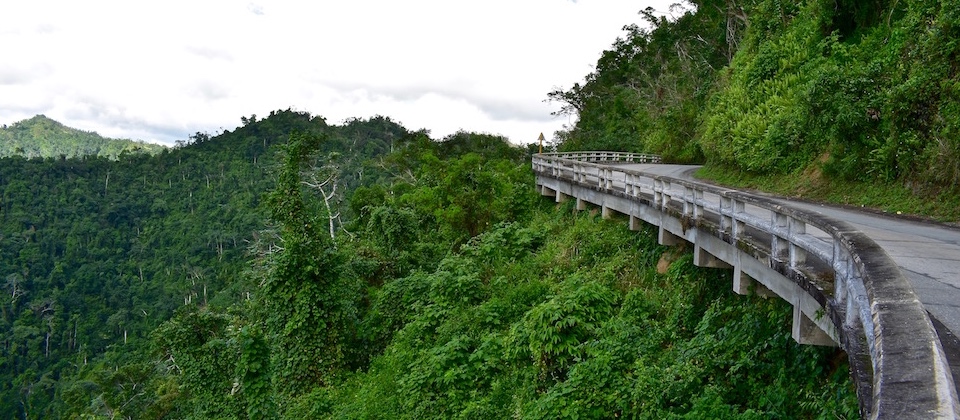
From cacti to pine forests
La Farola starts zigzagging up the mountains just after the small town of Cajobabo, another site of significant historical value. In May 1895, José Marti disembarked at Playitas de Cajobabo to join the fight for Cuban Independence, which he had organized and orchestrated himself from exile.
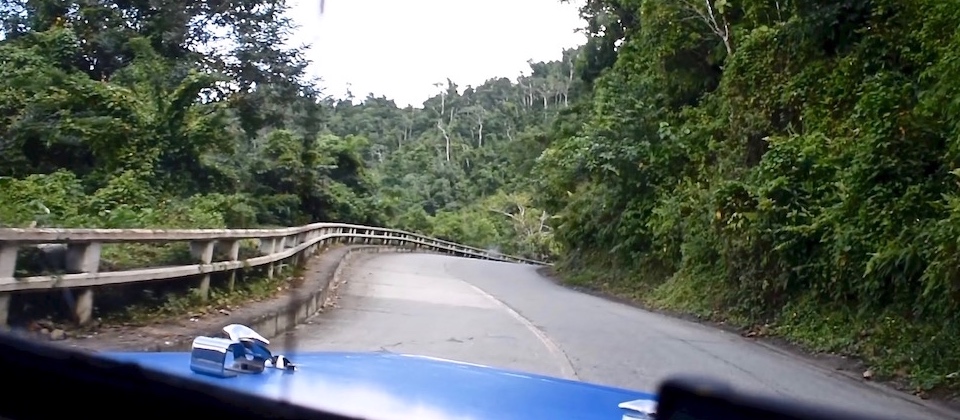
Not too far after Cajobabo, one of La Farola’s most pleasant spectacles begins – the progressive changes of a very diverse flora. Indeed, the cacti, aloe and other succulents start giving way to mango trees, royal palms (Roystonea regia, Cuba’s national tree), guapén trees and a range of other fruit trees.
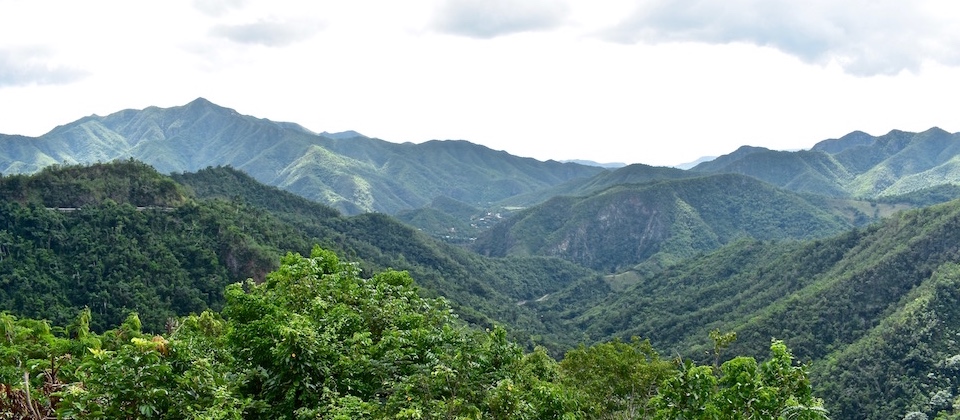
A variety of ferns start appearing as well, including tree ferns (Cyathea arborea), until you reach the highest areas where Cuban pine trees (Pinus cubensis) thrive.
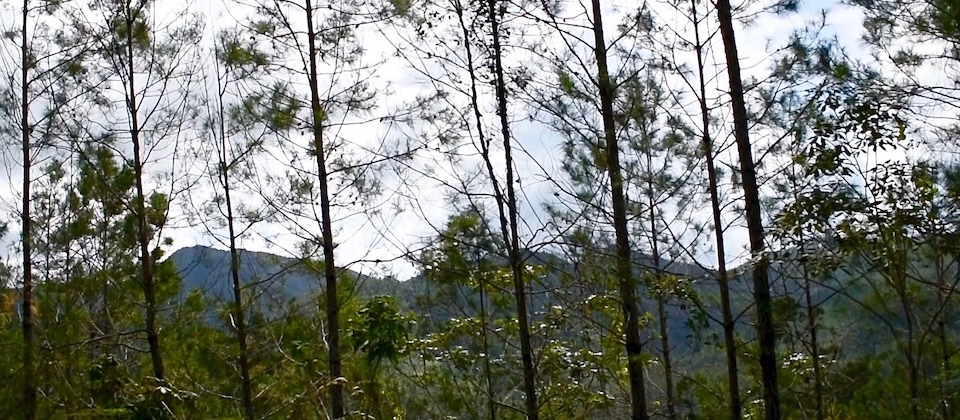
When you get to Alto de Cotilla you will have reached the maximum heights of your trajectory, at about 600m above sea level.
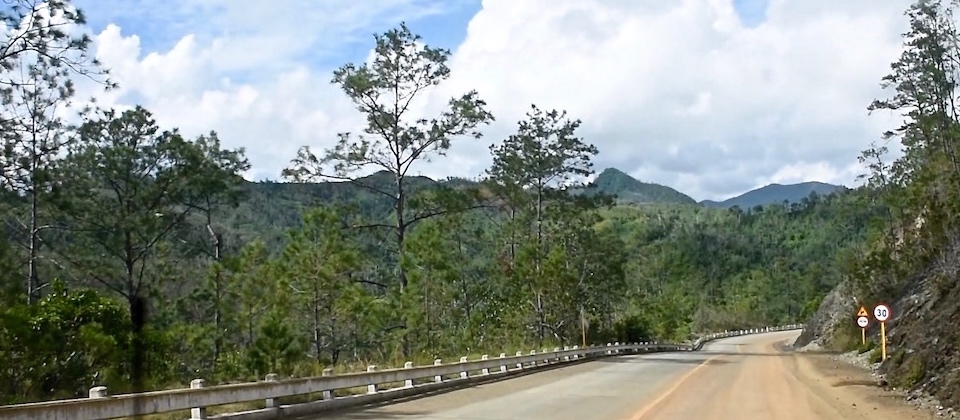
From river Yumuri to the views above El Jamal’s green valley
Schools, health clinics, peasants & horses dot the road. As well, women selling bananas, zapotes or mameyes, pineapples, mandarins and cucuruchos! Cucuruchos are a traditional sweet treat exclusive to the Baracoa region. It’s made of grated coconut, honey and varying mixes of papaya, guava, orange or other seasonal fruits, and it is ecologically wrapped in palm frond.
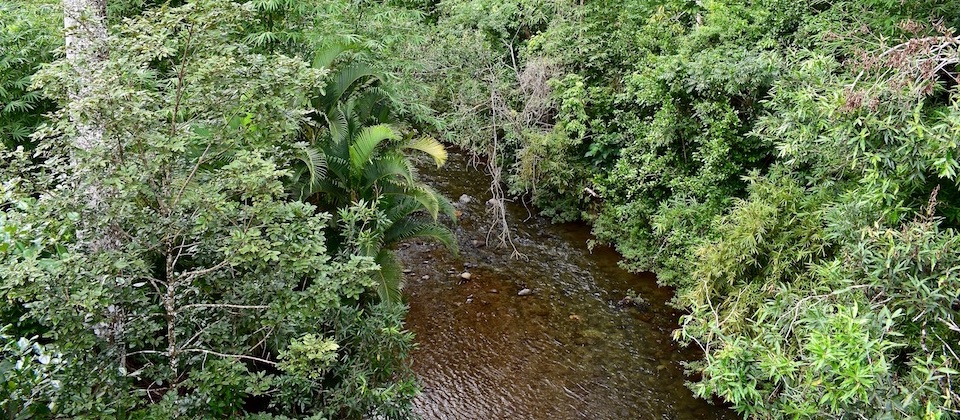
As you make your way on La Farola road you will come to a bridge above river Yumuri. This river springs from the Sierra del Purial mountains and it meets the sea at the northern coast of the Baracoa region, flowing for the last kilometers between the high cliffs of the Yumuri Canyon.
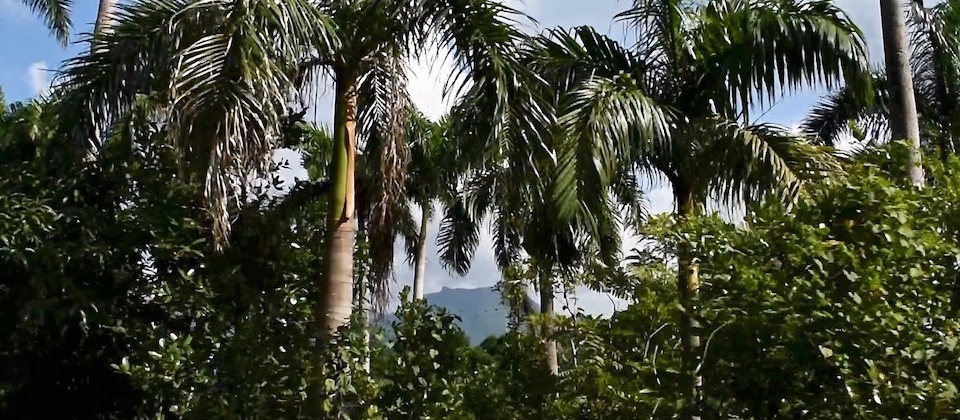
As you drive beyond the higher pine tree forests, you will get to the point where you leave the Imías municipality and enter the Baracoa municipality. A sign with large letters welcomes you to Baracoa. At this spot you will see a reproduction of the Cemí, a tobacco idol from the Taino culture, found in this Easternmost Cuban region. The views from here are spectacular.
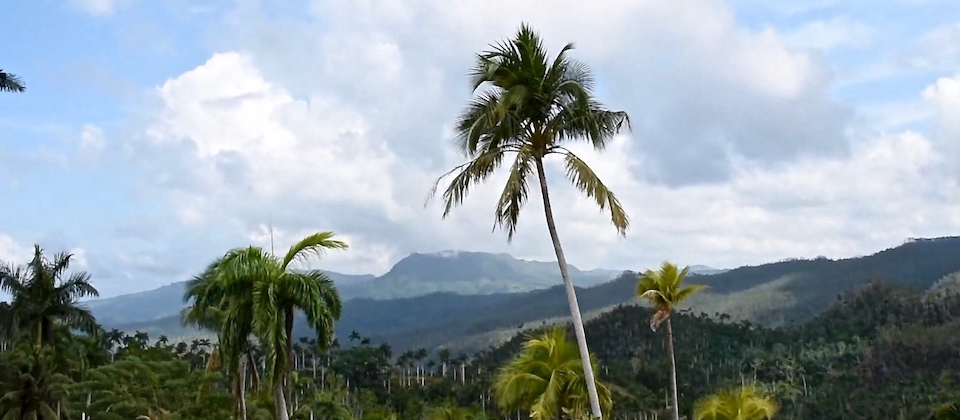
From here on you will start descending the mountains on your way to Baracoa. You will see little natural water streams gliding down the rock walls. From various sites along the road you can contemplate El Jamal valley, known for its variety of crops including the most delicious organic cocoa you’ve ever tasted. On a clear day you will see the sea…
La Farola – a road of choice for cyclists
Stretching over only 60 km, La Farola is not too long for the strongest cycling folks. Over those 60 km you climb from the sea level on Guantánamo’s southern coast to over 600 meters, and then descend again to the sea in the province’s northern coast.
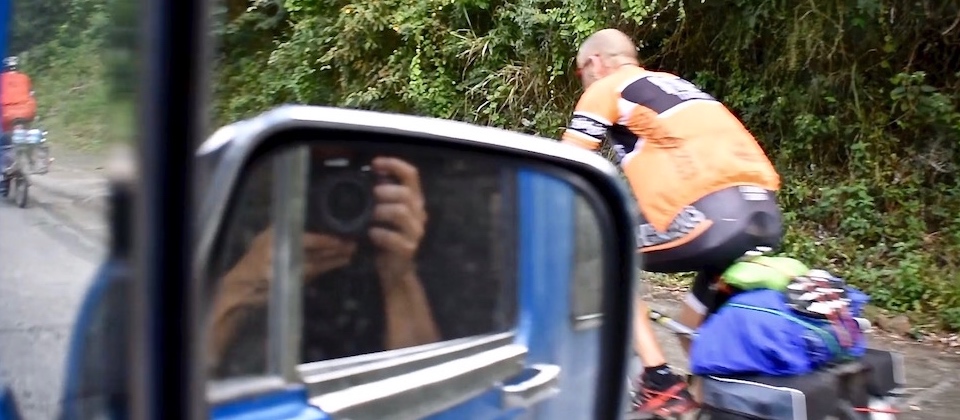
You often find cyclists taking up the challenge of completing this route in the middle of Eastern Cuba’s hot weather. But they are always smiling and enjoying the landscapes and natural environment.
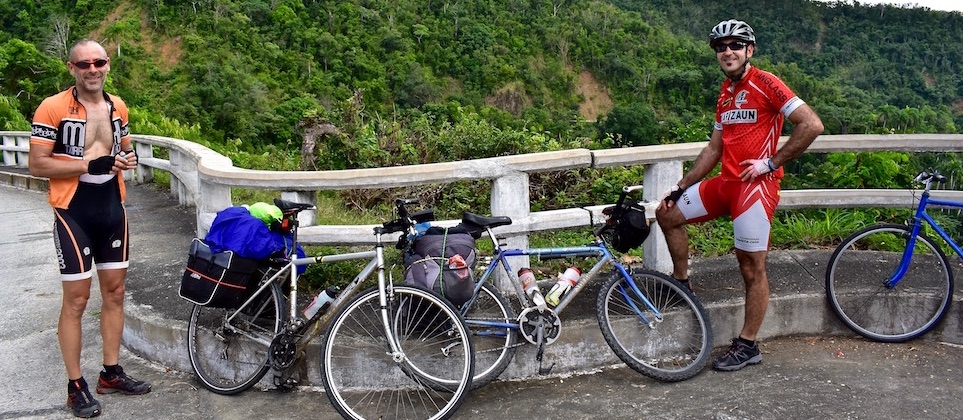
Several spots along the road are perfect for taking a break and recovering energy thanks to the fruit, typical sweet treats, juices and coffee sold by folks along the way.
Practical information and budget tips
- You can complete the Santiago to Baracoa route through La Farola on a Víazul air conditioned bus. This takes around 5 hours. The ticket costs USD $15. The bus makes only 1 stop for 5 minutes at the bus station in Guantanamo City.
- A private taxi from Santiago to Baracoa costs around USD $150. If you share this cost with 3 other people, it comes down to USD $37.50 per person, and you can make stops as you wish to appreciate landscapes and nature – and take great pictures.
- There are also “collective” taxis for a negotiable rate. They depart from the Víazul station in Santiago de Cuba. They may cost between USD $30 and $40 per person, but they don’t offer you the same flexibility to make stops at the traveler’s will.
- The fruit, chocolates and typical sweet treats sold by folks along the road have variable prices. Usually, 2 cucuruchos sell for USD $1.
Tags: Adventure Tourism, Cyclotourism, Ecology, Forests, Nature Tourism

Recent Comments
I would love to Cross the Sierra del Purial on La Farola. I’ve never been to that part of Cuba, but it looks amazing.
Thanks, Doreen and yes – La Farola is one of the most scenic roads in Cuba. Really worth taking your time as you engage it – there are so many amazing lookout points as you make your way… 🙂